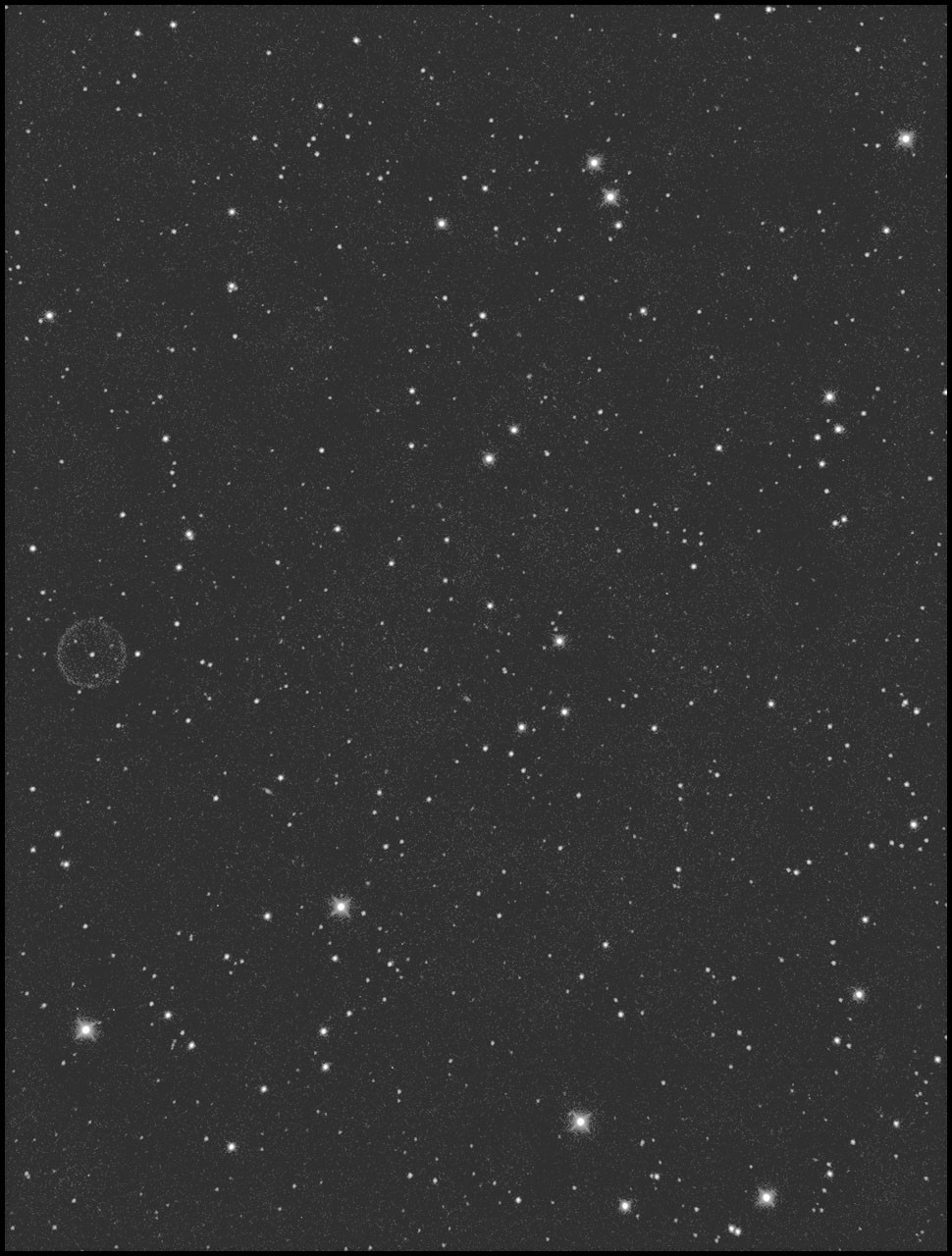The Starry Night, 232 :: home :: |
October's Bright Blue Weather10/17/2022. It's relatively clear and dark tonight with plenty of time between sunset and moonrise. I have three projects:
10/18/2022. I took another cut at Abell 39. I grabbed very short R and B frames, and then exposed O-iii until the field hit the treetops. Mostly this was an audition; if it shows up at all in a handful of 3 minute, unity gain, O-iii frames, then I'll have a good chance of doing good things with it when it comes around next year. Here's 5x180s of O-iii data, stacked (and pushed pretty hard):
Abell 39, 5x180s, O-iii, unity gain
It was supposed to be centered, but at least this time it's in the frame. So how did I miss it so far? Do this: launch Guide using Epoch 1950 coordinates (I was looking up some stuff from old sources many months ago) and copy the position of your target off the screen. Give that to GTOCP3 computer which uses epoch of date for its stored position (I'd recalibrated on Vega a few minutes earlier, and when I did that, the computer precessed its stored position for Vega to the epoch of date; when I supplied coordinates in B1950... well what was it supposted to do except go there? Set Guide to us current coordinates and all will be fine. After Abell 39, I started an earnest try for the Soap Bubble. And later, overnight, I'll see if I can get M33 over the 12-hour mark in luminance [11h 54m!]. I don't think I have enough R and B data yet to do much with it, and I know I don't have nearly enough H-a to spice up the star-forming regions. All in good time. In the meantime, black and white is elegant.
10/19/2022. The Soap Bubble is tough. I had good luck with the 92mm refractor and the Canon R6, but somehow the AT10 and a dedicated astrocamera find that it's a challenging target. (Psst: it's because I thought it was mostly an O-iii subject, but it isn't.) I tried Abell 39 again first thing tonight. Setting Guide to epoch of date worked fine, but the sky was less cooperative, and I got nothing worth saving. Next, the Soap Bubble and I are trying again: 300s high gain H-a start to finish. See next page. The only O-iii in the scene is, apparently, a thin boundary around part or all of a hydrogen bubble. When that field got low, I shot M52. I didn't have time for a good job the real Bubble Nebula, but I didn't want to to just let the 'scope sit while M33 crossed the meridian and into my open sky. Finally, I set up 12 more luminance frames of M33 (just because), and then a night's worth of R and B. H-a can wait. The weather remains clear; I'm still adding data. Read on. Read on.
:: top ::
|
|||
© 2022, David Cortner
